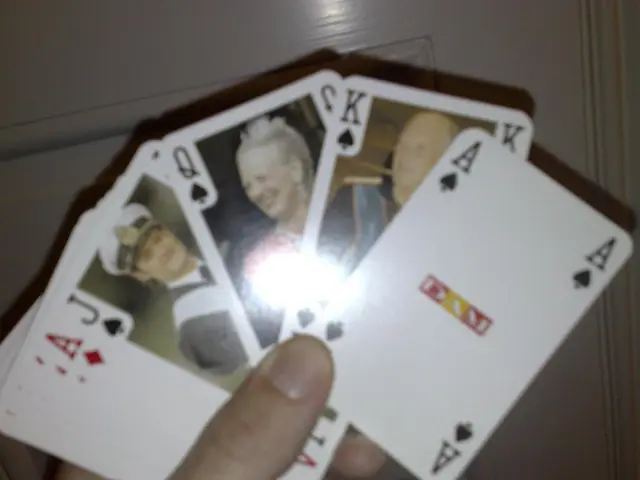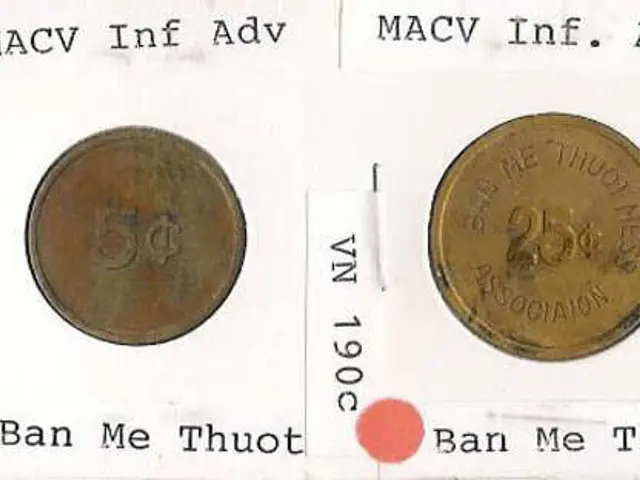Designer Discusses Perspective on Casino Atmosphere: Insights from a Design Professional Regarding the Casino Experience
Vibrant Casinos and the Psychology of Play
Unraveling the Fascinating Strategies Behind the Casinos' Appeal, as Decoded by Design Gurus
Step inside the splendid world of casinos, and you'll be met with a kaleidoscope of sights, sounds, and sensations, utterly enthralling. But there's more to this captivating atmosphere than meets the eye. Below the surface, a masterful blend of design, psychology, and gamification keeps players glued to their seats.
Mirko Humbert, the innovative force behind Designer Daily – a hub for designers seeking inspiration and resources – dives deep into the fascinating world of casino design. From slot machines to properties, Humbert explores the expertise of industry pioneers like Bill Friedman and the renowned interior designer, Roger Thomas, illuminating potential avenues for fresh ideas.
In a broad brushstroke of colors and a symphony of sounds, slot machines twist and twirl in an elaborate dance, enticing players to partake in the experience. According to Humbert, the aim is simple – to produce an ambiance luring customers back for more.
But how did this all begin? Humbert ponders, as researchers speculate that betting has existed in every civilization, from ancient Mesopotamia and Greece to Rome. The first rudimentary gambling tools, such as wooden blocks and dice, date back thousands of years, with modern-day games like baccarat emerging as early as the 1400s.
Fast forward to the 1600s, and we have the first known casino, Casino De Venezia, which opened its doors in Venice to the delight of enthusiasts. Since then, the casino industry has undergone a dramatic evolution, reflected in its design and layout.
One such pioneer is Bill Friedman, author of "Designing Casinos to Dominate the Competition" and the groundbreaking "Casino Management". Friedman advocated a focused approach in casino design, emphasizing an 'adult playground' theme with maze-like building plans and a minimalist approach to décor.
Casino floor plans have undergone significant changes over time. In the past, slot machines were arranged in neat rows, whereas modern designs feature a curving, haphazard layout, with mesmerizing lights and captivating visuals, inviting players to pause and try their luck.
Interestingly, the psychological implications of casino design extend far beyond the aesthetic, as casinos employ strategic design choices to keep players engaged for extended periods.
For instance, loss aversion plays a crucial role in casino interiors. This psychological phenomenon suggests that the potential loss is perceived as more daunting than an equivalent gain. As a result, players are enticed to spend more to avoid losing or to recoup their losses, rather than seeking to win big.
Casino properties intentionally target this psychological vulnerability, making it difficult for players to track the passage of time, such as by omitting wall clocks and windows. Other tactics include playing loud music, using bright lights, and creating a myriad of 'charming sounds', all designed to keep players engaged for longer.
The lack of showy design in Friedman's blueprint is profoundly intentional. Casinos seek to avoid the appearance of defeat, instead favoring designs that recommend positive rewards and encourage further gaming, even in small victories.
Enter Roger Thomas, the visionary who redefined the interior landscape of modern-day casino resorts in Las Vegas, including the iconic Mirage, Bellagio, Wynn Las Vegas, and Wynn Cotai.
Thomas began his career with the firm of Michael Taylor before partnering with Steve Wynn in the late 1980s. As Executive Vice President of Design for Wynn Design and Development, Thomas played a pivotal role in shaping the distinctive visual aesthetic of Las Vegas resorts.
Bold entrances, exquisite lobbies, extravagant suites, and curated art collections were Thomas' forte. His designs elevated the casino floor, raising ceilings and filling the space with sculptures and open areas, creating a 'high-end palace' atmosphere where players feel relaxed and comfortable.
As a result, players became captivated by the surroundings rather than the games themselves, a strategy that encouraged spending despite the unfavorable odds. This concept was christened 'the playground idea', embodying the essence of the modern casino experience.
Casinos cater to a diverse clientele, attracting patrons through a multi-faceted approach to design. The aim is simple – to tantalize players until they reach for their wallets, hoping to dance with Lady Luck.
According to Humbert, a game's theme plays a vital role in its success, with players more likely to enjoy a game if they can identify with the characters and storyline. Consequently, game developers meticulously craft memorable characters with engaging storylines to make their creations stand out.
Diverse characters help increase game interest and attract a broad audience, with unique dialogues, animations, and bonuses transforming characters into unforgettable entities that captivate players and leave a lasting impression.
Ultimately, the unique qualities of each game are what make them memorable, creating that unforgettable moment that keeps players coming back for more.
References:1. Designing Casinos to Dominate the Competition, John G. Brokopp2. Casino Management, Douglas Walker and Henry Thomas Schmidt3. Inside the Box: A Proven System of Creativity for Breakthrough Results, Mitchel Wade4. The Art of Reality: How Venice's Carnival Inspires Music, Art, and Fashion, Russell Martin, Bob Bondo, Mark Titchner5. Sensory Marketing: The New Science of Customer Engagement, Peter Field, Les Binet, Sarah Carter, Rachel Hopkins, Andrew Jaszek, Britta Lickiss, Mike Taschetta.
Savvy casino designers like Roger Thomas, inspired by the aesthetic appeal of high-end palaces, use captivating surroundings to divert attention from unfavorable odds, creating a lasting impression that encourages continued play.
Popular casino games often revolve around memorable characters and storylines, as game developers strategically create engaging plotlines and animations to appeal to a broader audience, fostering repeat plays to experience the memorable moments again and again.




